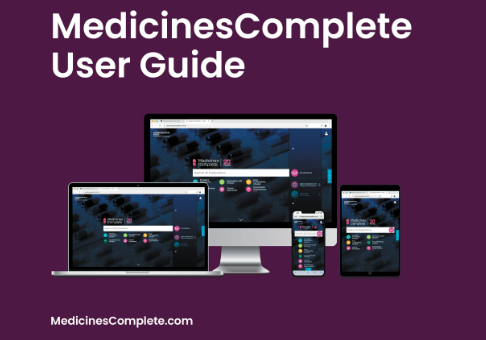Clarity’s DTG February 2022 Update
This update contains 9 significant changes and 15 minor changes.
Significant Changes:
- Constipation — reviewed. A literature search was conducted in December 2021 to identify evidence-based guidelines, UK policy, systematic reviews, and key randomized controlled trials published since the last revision of the topic. No major changes to recommendations have been made.
- Diverticular disease — reviewed. A literature search was conducted in December 2021 to identify evidence-based guidelines, UK policy, systematic reviews, and key randomized controlled trials published since the last revision of the topic.
- DMARDs — reviewed. A literature search was conducted in November 2021 to identify evidence-based guidelines, UK policy, systematic reviews, and key randomized controlled trials published since the last revision of the topic.
- Head lice — reviewed. A literature search was conducted in October 2021 to identify evidence-based guidelines, UK policy, systematic reviews, and key randomized controlled trials published since the last revision of this topic. No major changes to the recommendations have been made.
- Insect bites and stings — reviewed. A literature search was conducted in November 2021 to identify evidence-based guidelines, UK policy, systematic reviews, and key randomized controlled trials published since the last revision of this topic. No major changes to the recommendations have been made.
- Nausea/vomiting in pregnancy — reviewed. A literature search was conducted in November 2021 to identify evidence-based guidelines, UK policy, systematic reviews, and key randomized controlled trials (RCTs) published since the last revision of the topic. The recommendations have been updated in line with the National Institute for Health and Care Excellence (NICE) guidance Antenatal care (NICE 2021) and other current evidence in the literature. The definition of hyperemesis gravidarum has been amended, as ketonuria is no longer required to make the diagnosis, in line with the Royal College of Obstetricians and Gynaecologists (RCOG) Green-top guideline The management of nausea and vomiting of pregnancy and hyperemesis gravidarum (2016). In the Management Scenario, the Drug treatments section has been amended to include chlorpromazine as an option in line with NICE 2021 and RCOG 2016 guidance, and doxylamine with pyridoxine as an option, in line with NICE 2021 guidance. The Prescribing information section has been amended accordingly.
- Postnatal care — this is a new topic. A literature search was conducted in September 2021 to identify evidence-based guidelines, UK policy, systematic reviews, and key randomized controlled trials. The evidence-base has been reviewed in detail, and recommendations are clearly justified and transparently linked to the supporting evidence.
- Pre-patellar bursitis — reviewed. A literature search was conducted in October 2021 to identify evidence-based guidelines, UK policy, systematic reviews, and key randomized controlled trials published since the last revision of the topic. No major changes to clinical recommendations have been made.
- Safeguarding adults in care homes — this is a new topic. A literature search was conducted in October 2021 to identify evidence-based guidelines, UK policy, systematic reviews, and key randomized controlled trials. The evidence-base has been reviewed in detail, and recommendations clearly justified and transparently linked to the supporting evidence.
Minor Changes:
- Analgesia – mild to moderate pain — minor update. Clarified the basis for recommending paracetamol dose reduction in people with risk factors for hepatotoxicity and paracetamol overdose, including those who weigh less than 50 kg.
- Angina — minor update. QT-interval prolongation and elevated creatinine levels have been added as uncommon adverse effects of ivabradine.
- Atrial fibrillation — minor update. A minor typographical error has been corrected.
- Candida – female genital — minor update. Information that topical imidazole preparations may damage latex condoms and diaphragms has been added to the management section of this topic.
- Cervical screening — minor update. The section on follow-up screening after CIN treatment has been updated to align with the Public Health England (PHE) guidance Cervical screening: programme and colposcopy management to incorporate details of primary HPV screening.
- Chronic kidney disease — minor update. A typographical error has been corrected.
- Dental abscess — minor update. The dose of amoxicillin has been updated in line with the Public Health England document Summary of antimicrobial prescribing guidance – managing common infections.
- Depression — minor update. A minor typographical error has been corrected.
- Lipid modification – CVD prevention — minor update. Information that ezetimibe with bempedoic acid can be considered for people taking ezetimibe monotherapy if it alone does not control low-density lipoprotein cholesterol well enough has been added to this topic in line with the NHS England Summary of National Guidance for Lipid Management for Primary and Secondary Prevention of CVD.
- Male pattern hair loss — minor update. Added a reference to a patient leaflet which advises against concomitant prescribing of minoxidil and finasteride.
- Parkinson’s disease — minor update. Clarification on the provenance of the information relating to the fact that oral monoamine oxidase-B (MAO-B) inhibitors (selegiline, rasagiline, or safinamide) — do not cause an interaction after consumption of tyramine-rich foods. Links to the manufacturers SPC and a textbook of neurology have been added.
- Prostatitis – chronic — minor update. A broken hyperlink has been updated.
- Stroke and TIA — minor update. Typographical error in spelling corrected.
- Varicocele — minor update. New evidence demonstrates no laterality of increased risk of retroperitoneal cancer with varicocele.
- Glaucoma — minor update. Revised and updated to include first line therapeutic changes in secondary care management of glaucoma. If people have an intraocular pressure of 24mmHg or more and are at risk of visual impairment first line treatment is 360° selective laser trabeculoplasty. This recommendation is based on the NICE guideline [NG 81] Glaucoma: diagnosis and management.





